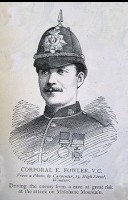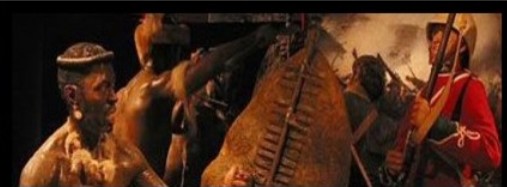| Latest topics | » The Pictorial World - March 15th 1879 Yesterday at 1:13 pm by ben2000 » The lost diary of Pvt James Owen Thu Jul 25, 2024 12:03 pm by miklew » Last of the 24th at Isandhlwana Wed Jul 24, 2024 6:16 pm by John Young » What was the uniform of field marshals/generals in the zulu war? Mon Jul 22, 2024 6:53 am by John Young » Henderson and the NNH at Rorke's Drift  Sat Jul 20, 2024 12:17 pm by SRB1965 » Capt. D. Hayes 1/3rd Regt., NNC Thu Jul 18, 2024 11:11 am by Julian Whybra » The Wrecked Camp Wed Jul 17, 2024 4:33 pm by Julian Whybra » Private N/N John Robert Branch 90th Regiment and his discovered diary Mon Jul 15, 2024 8:53 pm by 1879graves » Private John Scott 24th Regiment a fugitive at large Sun Jul 14, 2024 12:06 pm by 1879graves » 90th foot sgt T. Collins 214 Sun Jul 14, 2024 10:57 am by johnman » Baron Von Steitencron Wed Jul 10, 2024 3:10 pm by Julian Whybra » Sgt Joseph Windridge, Defender of Rorke's Drift - Memorial Tue Jul 09, 2024 3:15 am by 90th » Writing advice Sun Jul 07, 2024 4:04 pm by Julian Whybra » South Africa 1877-79, 1 clasp, 1877-8-9 (4389 Fr. Sergt. S. Smith. O/2. Bde. R.A.) Sun Jul 07, 2024 9:30 am by rai » The trashing of the Zulu monument to the brave warriors at Isandlawana March 12, 2024 has been blamed on scrap metal scavengers. Thu Jul 04, 2024 7:41 pm by ADMIN» The Goodwill Zulu Festival: Celebrating the Welsh and KwaZulu Natal Shared Heritage. Thu Jul 04, 2024 7:27 pm by ADMIN» Any nominal role of G Coy 2/24th regiment  Thu Jul 04, 2024 11:18 am by Wayne » Bassage Diary Thu Jul 04, 2024 9:31 am by Julian Whybra » Prior to Sihayo's Kraal  Thu Jul 04, 2024 9:19 am by 90th » British Fort Locations Thu Jul 04, 2024 3:40 am by 90th » Sergeant 1064 Tom Hick / Hicks G Company 2/24th Regiment Wed Jul 03, 2024 11:05 am by Julian Whybra » A Hungarian soldier in the Zulu War (?) Fri Jun 28, 2024 2:31 pm by Mr M. Cooper » Private 25B/279 Henry Sears Bugler E Company 24th Reg. KIA Isandlwana Thu Jun 27, 2024 1:07 pm by gardner1879 » Hamilton Browne's birthday Fri Jun 21, 2024 9:22 am by Julian Whybra » Zulu "Corps" Thu Jun 20, 2024 6:01 pm by Hobbes » Army Pay Department Personnel Thu Jun 20, 2024 11:49 am by Julian Whybra » Ntshingwayo birth date Sun Jun 16, 2024 11:37 am by Hobbes » Zibhebhu and Cetshwayo's family Wed Jun 05, 2024 9:11 pm by Julian Whybra » Smith's Store/Hotel Wed Jun 05, 2024 6:06 pm by Julian Whybra » Corporal James Frowen Williams F Company.  Tue Jun 04, 2024 5:20 pm by Julian Whybra » Shaka iLembe Sat Jun 01, 2024 1:27 pm by Jon84 » Bugler 1415 Thomas Finn / Flin 90th Regiment  Sat May 25, 2024 11:28 am by johnman » Inspector-General Evelyn Richard Hugh Pollard Tue May 14, 2024 10:13 am by ADMIN» Alfred Fairlie Henderson photographs. Sat May 11, 2024 8:01 am by Julian Whybra » Fairlie's Native Police Thu May 02, 2024 9:12 pm by Hobbes |
| July 2024 | | Mon | Tue | Wed | Thu | Fri | Sat | Sun |
|---|
| 1 | 2 | 3 | 4 | 5 | 6 | 7 | | 8 | 9 | 10 | 11 | 12 | 13 | 14 | | 15 | 16 | 17 | 18 | 19 | 20 | 21 | | 22 | 23 | 24 | 25 | 26 | 27 | 28 | | 29 | 30 | 31 | | | | |  Calendar Calendar |
|
| Top posting users this month | |
| New topics | » The Pictorial World - March 15th 1879 Yesterday at 1:13 pm by ben2000 » The lost diary of Pvt James Owen Thu Jul 25, 2024 12:03 pm by miklew » Last of the 24th at Isandhlwana Wed Jul 24, 2024 5:53 pm by miklew » What was the uniform of field marshals/generals in the zulu war? Sun Jul 21, 2024 12:30 pm by darthvaix » Henderson and the NNH at Rorke's Drift  Fri Jul 19, 2024 1:29 pm by SRB1965 » Capt. D. Hayes 1/3rd Regt., NNC Wed Jul 17, 2024 10:52 pm by Julian Whybra » The Wrecked Camp Sun Jul 14, 2024 8:51 am by 61MECH » The trashing of the Zulu monument to the brave warriors at Isandlawana March 12, 2024 has been blamed on scrap metal scavengers. Thu Jul 04, 2024 7:41 pm by ADMIN» The Goodwill Zulu Festival: Celebrating the Welsh and KwaZulu Natal Shared Heritage. Thu Jul 04, 2024 7:27 pm by ADMIN |
| Zero tolerance to harassment and bullying. | |
Due to recent events on this forum, we have now imposed a zero tolerance to harassment and bullying. All reports will be treated seriously, and will lead to a permanent ban of both membership and IP address.
Any member blatantly corresponding in a deliberate and provoking manner will be removed from the forum as quickly as possible after the event.
If any members are being harassed behind the scenes PM facility by any member/s here at 1879zuluwar.com please do not hesitate to forward the offending text.
We are all here to communicate and enjoy the various discussions and information on the Anglo Zulu War of 1879. Opinions will vary, you will agree and disagree with one another, we will have debates, and so it goes.
There is no excuse for harassment or bullying of anyone by another person on this site.
The above applies to the main frame areas of the forum.
The ring which is the last section on the forum, is available to those members who wish to partake in slagging matches. That section cannot be viewed by guests and only viewed by members that wish to do so. |
| Fair Use Notice | | Fair use notice.
This website may contain copyrighted material the use of which has not been specifically authorised by the copyright owner.
We are making such material and images are available in our efforts to advance the understanding of the “Anglo Zulu War of 1879. For educational & recreational purposes.
We believe this constitutes a 'fair use' of any such copyrighted material, as provided for in UK copyright law. The information is purely for educational and research purposes only. No profit is made from any part of this website.
If you hold the copyright on any material on the site, or material refers to you, and you would like it to be removed, please let us know and we will work with you to reach a resolution. |
| | | Natal Naval Corps ( or Contingent) |  |
| | | Author | Message |
|---|
barry

Posts : 947
Join date : 2011-10-21
Location : Algoa Bay
 |  Subject: Natal Naval Corps ( or Contingent) Subject: Natal Naval Corps ( or Contingent)  Thu Mar 29, 2012 7:06 am Thu Mar 29, 2012 7:06 am | |
| Hi POTom,
Do you have any data on this unit, ie the Natal Naval Volunteers?
regards,
barry |
|   | | littlehand

Posts : 7076
Join date : 2009-04-24
Age : 55
Location : Down South.
 |  Subject: Re: Natal Naval Corps ( or Contingent) Subject: Re: Natal Naval Corps ( or Contingent)  Thu Mar 29, 2012 2:04 pm Thu Mar 29, 2012 2:04 pm | |
| Natal Naval Volunteers (1885 – 1904)
"The Natal Naval Volunteers (NNV) was established in 1885 as a coastal artillery unit tasked with defending the port of Durban. This unit was too small and poorly equipped to serve its intended purpose, but it nevertheless remained in existence and in 1899 it was called out on active service for the first time. War with the Boer Republics of the Transvaal and Orange Free State had been threatening for some time and the Anglo-Boer War finally broke out in October, 1899. Boer commandos from both Republics invaded Natal from the north and west.
All the Natal volunteer regiments, including the NNV, were called up for active service. The confused situation in the early stage of the war led to the NNV being split into two parts, with both attached to elements of the hastily assembled British Naval Brigade, which was made up of men and guns from Royal Navy ships in South African waters. One part of the Naval Brigade, including 73 men from the NNV, ended up in Ladysmith and it was besieged there from early November 1899 until the end of February 1900. The second part of the Naval Brigade, including 52 men from the NNV, took part in the operations to relieve the Siege of Ladysmith.
Guns of the besieged Naval Brigade remained in service throughout the siege and kept the Boer commandos out of easy reach of Ladysmith. The NNV were armed with one 9-pounder and two 3-pounder Hotchkiss guns and played a small part in the Naval Brigade's activities. Only once did the Boers attempt a frontal assault on the British lines and that was at the Battle of Wagon Hill on 6 January 1900. Men of the NNV, including the Hotchkiss detachment, were engaged at both Wagon Hill and further east at Caesar's Camp. In his dispatch after the siege was lifted, the British Commander in Ladysmith, General Sir George White, wrote:
"The Natal Naval Volunteers have proved themselves worthy comrades of the land forces of the colony."
The force assembled to relieve the Siege of Ladysmith was under the command of General Sir Redvers Buller. The NNV in the relief force were armed with two 9-pounders and their first task was to build two outposts at Colenso, Fort Wylie and Fort Nicholson. After being shelled by the Boers on 3 November 1899, the NNV were ordered to evacuate Fort Wylie, spike their guns and leave their ammunition. This order was disobeyed and the men and all their equipment returned to Estcourt. Thereafter, they were based at Frere as part of the Naval Brigade and they took part in shelling the Boer lines north of the Tugela River.
After the defeat of the British at the Battle of Colenso on 15 December 1899, the NNV moved westwards with Buller's army, which was to cross the Tugela River at Potgieter's Drift. Since the Boers were not entrenched close to the river in this area, the crossing was not contested, but the river itself caused problems. Effecting river crossings was the preserve of the Royal Engineers but at Potgieter's Drift they failed in this duty and it fell to a detachment from the Naval Brigade under Lieutenant Chiazzari of the NNV to rescue the situation. The events were described by W K-L Dickson in his book, 'The Biograph in battle: Its story in the South African War', as follows;
"January 16th …… Our soldiers looked wretchedly wet and bedraggled as they wound their way over and around the kopjes. We could see them slowly approach the river and test the crossing, two men going up to their middles and wading round to make sure there were no entanglements for their feet. Then the troopers followed one by one, while others tried to engineer the ferry, which they ultimately abandoned to our naval men, the handy boys, who are signalled for from the valley. Soon a party of thirteen was made up under the command of Lieutenant Chiazzari, with Chief Gunner Instructor Baldwin assisting. They managed quickly to repair the ferry and sent the troops across, toiling all evening and throughout the night until dawn. General Buller sent word to Captain Jones next morning that his men were worth their weight in gold. Baldwin's account of this feat is most entertaining. I abbreviate it somewhat for convenience sake: "We got orders to repair and handle the ferry just as it was getting dark, so we nipped down the hill and were soon at work, the Colonel of the Engineers passing it over to us. Lieutenant Chiazzari took the ferry while I remained on this side, and soon had things going in good shape. It is a wonder what a bit of rope will do with plenty of willing chaps. We were six from [HMS] Terrible and seven Natal Volunteers, including Lieutenant Chiazzari …… Before dawn we had taken nearly all over at a rate of 126 horses and three wagons in forty-two minutes, and this we repeated for two nights."
In addition to the gratitude of General Buller, Lieutenant Chiazzari was thanked by Major-General N G Lyttelton and was mentioned in despatches.
In spite of the successful river crossing, the British went on to loose the Battle of Spioenkop and, later, the Battle of Vaalkrans, and they again retreated to their former positions near Colenso.
The climactic battles to relieve the Siege of Ladysmith were fought along the Tugela Heights, east of Colenso, over the period 12 to 28 February 1900. Following their success at Potgieter's Drift, Lieutenant Chiazzari and men of the Naval Brigade were again called upon to repair and operate a ferry, this one at Colenso, after the town had been taken by Major-General A F Hart's brigade on 21 February. The ferry was operating within three and one half hours and Chiazzari again received a General's thanks and a mention in despatches.
The commander of the Naval Brigade in the relief force, Captain E P Jones RN of HMS Forte, reported to Rear-Admiral R H Harris as follows:
"Lieutenant N W Chiazzari, Natal Naval Vols., has been most useful, especially in getting into working order and working the punts across the river, both at Potgieter's and at Colenso, by which all the troops crossed."
Source: Brett Hendey |
|   | | Guest
Guest
 |  Subject: Re: Natal Naval Corps ( or Contingent) Subject: Re: Natal Naval Corps ( or Contingent)  Thu Mar 29, 2012 2:29 pm Thu Mar 29, 2012 2:29 pm | |
| barry,
What scant information I know about the Natal Naval Volunteers is their involvement in the Boer War, which is covered in "littlehand's" post.
Since they did not participate in the Zulu War, I have not yet had any time to do much research on them. The only naval volunteers in 1879 were the two men from Durban who were members of the Royal Naval Artillery Volunteers - Jennings and Ogilvie.
Petty Officer Tom |
|   | | | | Natal Naval Corps ( or Contingent) |  |
|
Similar topics |  |
|
| | Permissions in this forum: | You cannot reply to topics in this forum
| |
| |
| |
